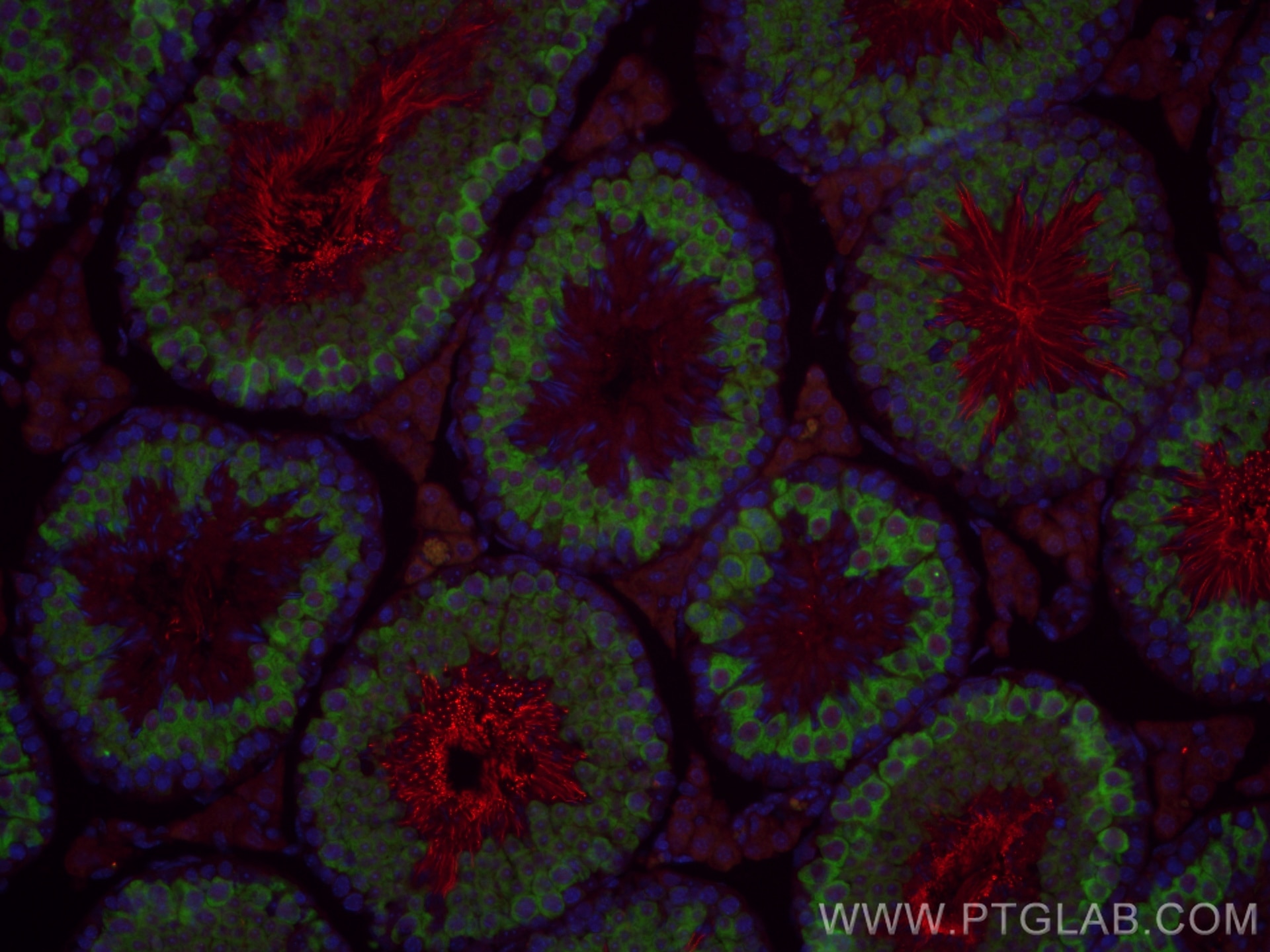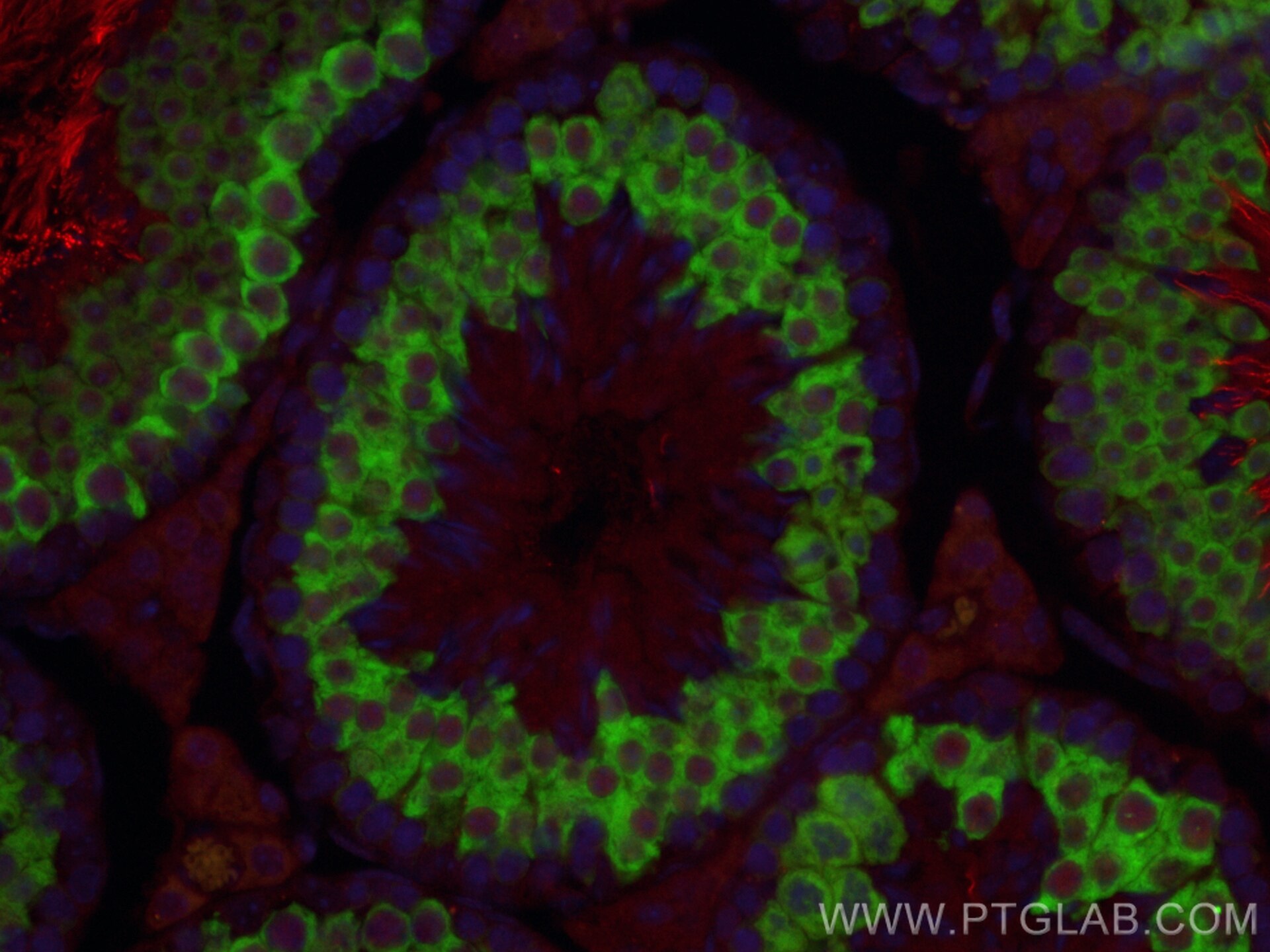Anticorps Polyclonal de lapin anti-PRM1
PRM1 Polyclonal Antibody for IF
Hôte / Isotype
Lapin / IgG
Réactivité testée
Humain, rat, souris
Applications
IF
Conjugaison
CoraLite®594 Fluorescent Dye
N° de cat : CL594-15697
Synonymes
Galerie de données de validation
Applications testées
| Résultats positifs en IF | tissu testiculaire de souris, |
Dilution recommandée
| Application | Dilution |
|---|---|
| Immunofluorescence (IF) | IF : 1:50-1:500 |
| It is recommended that this reagent should be titrated in each testing system to obtain optimal results. | |
| Sample-dependent, check data in validation data gallery | |
Informations sur le produit
CL594-15697 cible PRM1 dans les applications de IF et montre une réactivité avec des échantillons Humain, rat, souris
| Réactivité | Humain, rat, souris |
| Hôte / Isotype | Lapin / IgG |
| Clonalité | Polyclonal |
| Type | Anticorps |
| Immunogène | PRM1 Protéine recombinante Ag8323 |
| Nom complet | PRM1 |
| Masse moléculaire calculée | 51 aa, 6 kDa |
| Poids moléculaire observé | 20 kDa |
| Numéro d’acquisition GenBank | BC003673 |
| Symbole du gène | PRM1 |
| Identification du gène (NCBI) | 5619 |
| Conjugaison | CoraLite®594 Fluorescent Dye |
| Excitation/Emission maxima wavelengths | 588 nm / 604 nm |
| Forme | Liquide |
| Méthode de purification | Purifié par affinité contre l'antigène |
| Tampon de stockage | PBS avec glycérol à 50 %, Proclin300 à 0,05 % et BSA à 0,5 %, pH 7,3. |
| Conditions de stockage | Stocker à -20 °C. Éviter toute exposition à la lumière. Stable pendant un an après l'expédition. L'aliquotage n'est pas nécessaire pour le stockage à -20oC Les 20ul contiennent 0,1% de BSA. |
Informations générales
PRM1 is a 51 amino acid protein. PRM1 substitute for histones in the chromatin of sperm during the haploid phase of spermatogenesis. They compact sperm DNA into a highly condensed, stable and inactive complex. PRM1 is expressed in testis. The calculated molecular weight of PRM1 is 9 kDa, but Phosphorylated protein is about 20 kDa. (PMID: 24818823 )
Protocole
| Product Specific Protocols | |
|---|---|
| IF protocol for CL594 PRM1 antibody CL594-15697 | Download protocol |
| Standard Protocols | |
|---|---|
| Click here to view our Standard Protocols |



